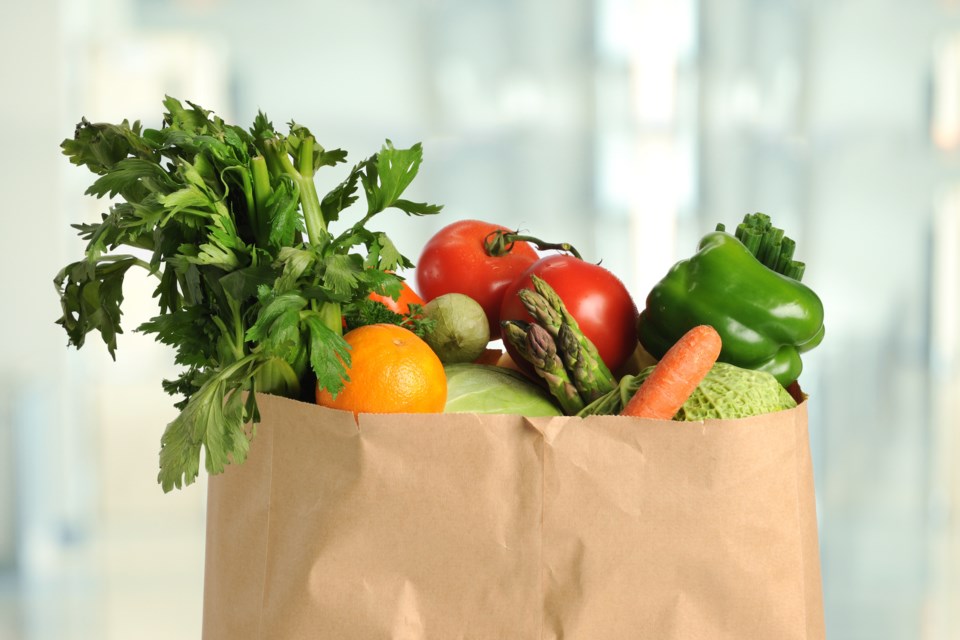Significant increases in the cost of food are making it harder and harder for many Algoma residents to eat well.
Algoma Public Health (APH) today released the results of its annual "Nutritious Food Basket" survey — conducted at eight grocery stores across the region — which it uses to obtain the average cost of 61 basic food items recommended by Canada’s Food Guide.
The results of the 2023 NFB survey show that it costs $1,180.92 per month to feed a family of four (two adults and two children) and $423.32 per month to feed a single-person household. This represents a 6.86 per cent increase in food costs since 2022.
For many households with lower or fixed incomes, the cost of food plus the average rental price consumes most of the household income. In some cases, households simply do not have enough money to cover basic food and rent, APH says.
A single person receiving Ontario Works will be in debt $259.77 each month after paying for food and rent. A family of four receiving Ontario Works will have only $420.50 left after paying for food and rent.
This amount must cover all other essential expenses, including childcare, transportation, heat/hydro, internet, phone, medications, home furnishings, and more.
“Food insecurity across the ten provinces is the highest it has been in the 17-year history of monitoring, coming in at 17.8 per cent of households nationwide,” says Sarah Devine, a registered dietitian at APH, in a news release. “In Algoma, we see rates closer to 20 per cent of households experiencing food insecurity. Policies that improve income are needed to meaningfully reduce food insecurity.”
For more information, including the full APH report, see the press release below.
With the significant increase in the cost of living, the results of Algoma Public Health’s 2023 Nutritious Food Basket (NFB) survey may come as no surprise: the cost of nutritious food is increasing, and many Algoma residents simply cannot afford to eat well.
Each year, Algoma Public Health (APH) conducts the NFB survey at eight grocery stores across Algoma to obtain the average cost of 61 basic food items. The food items surveyed represent recommendations laid out by Canada’s Food Guide. It is important to note that infant formula and food, foods for special diets, prepared foods, restaurant meals, and personal and household care items are not included in the survey.
The results of the 2023 NFB survey show that it costs $1180.92/month to feed a family of four (two adults and two children) and $423.32/month to feed a single person household. This represents a 6.86 per cent increase in food costs since 2022.
For many households with lower or fixed incomes, the cost of food plus the average rental price consumes most of the household income. In some cases, households simply do not have enough money to cover basic food and rent. A single person receiving Ontario Works will be in debt $259.77 each month after paying for food and rent. A family of four receiving Ontario Works will have only $420.50 left over after paying for food and rent. This amount must cover all other essential expenses, including childcare, transportation, heat/hydro, internet, phone, medications, home furnishings, and more.
“Food insecurity across the ten provinces is the highest it has been in the 17-year history of monitoring, coming in at 17.8 per cent of households nationwide,” shares Sarah Devine, Registered Dietitian at APH. “In Algoma, we see rates closer to 20 per cent of households experiencing food insecurity. Policies that improve income are needed to meaningfully reduce food insecurity.”
Recent data from Public Health Ontario indicates that from 2020-2022, 1 in 5 (19.4 per cent) Algoma households experienced food insecurity. Food insecurity is defined as inadequate or insecure access to food due to financial constraints. When expenses become stretched, it is typically the food budget that suffers to pay other household bills. Food insecurity negatively impacts physical, mental, and social well-being, quality of life, and life-expectancy. Food insecurity is a robust predictor of healthcare use and costs, resulting in considerable public spending on health care.
Food insecurity is an income issue. There is strong evidence that food insecurity could be reduced through income-based solutions. By improving the financial circumstances of low-income households, people are enabled to spend their money in ways that improve food security with dignity. Income solutions include supporting a guaranteed basic income, lowering income tax rates for low-income households, and increasing social assistance rates.
For more information about the 2023 NFB results, read the full report from APH.
To spread the word share this infographic about food insecurity and food affordability.
